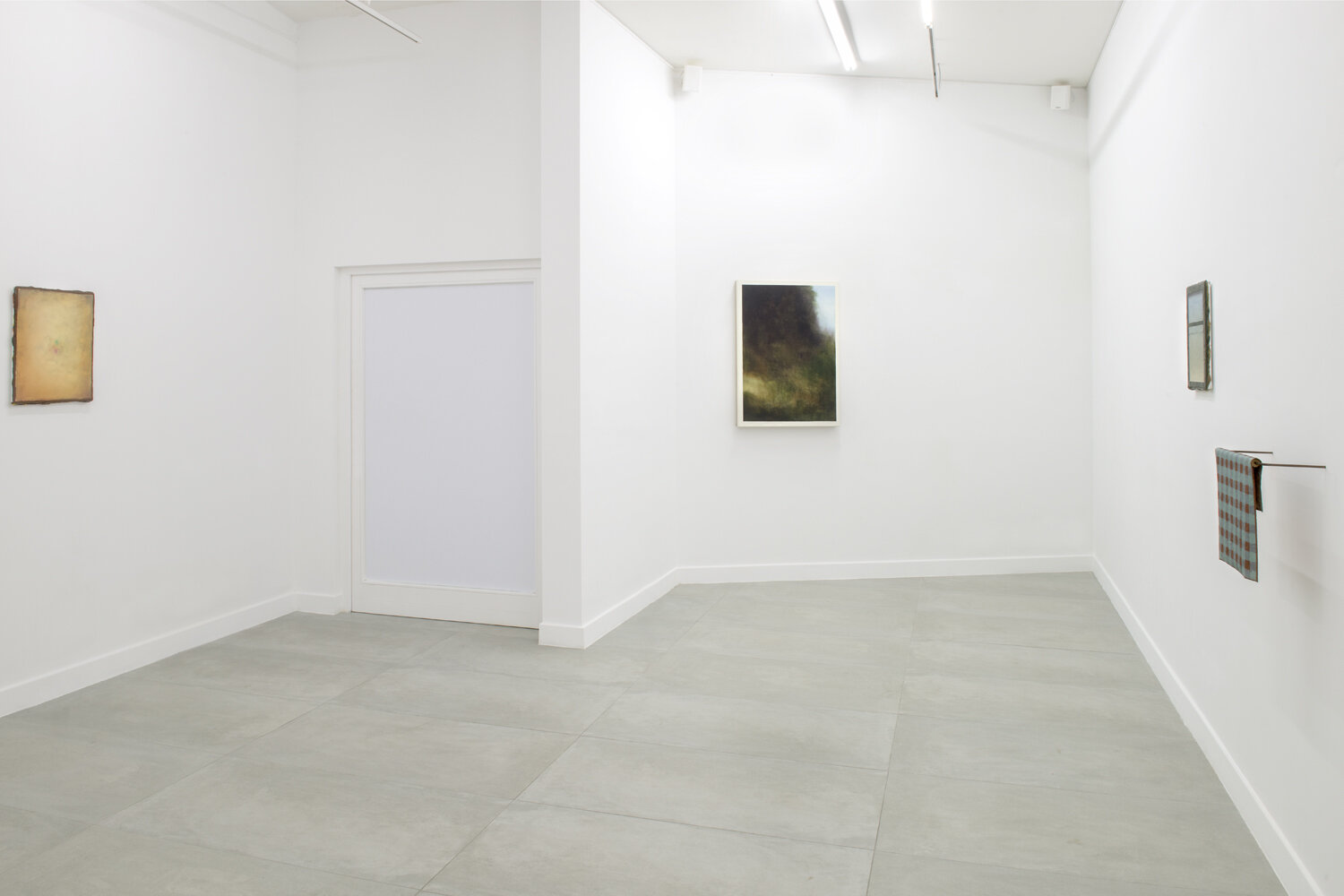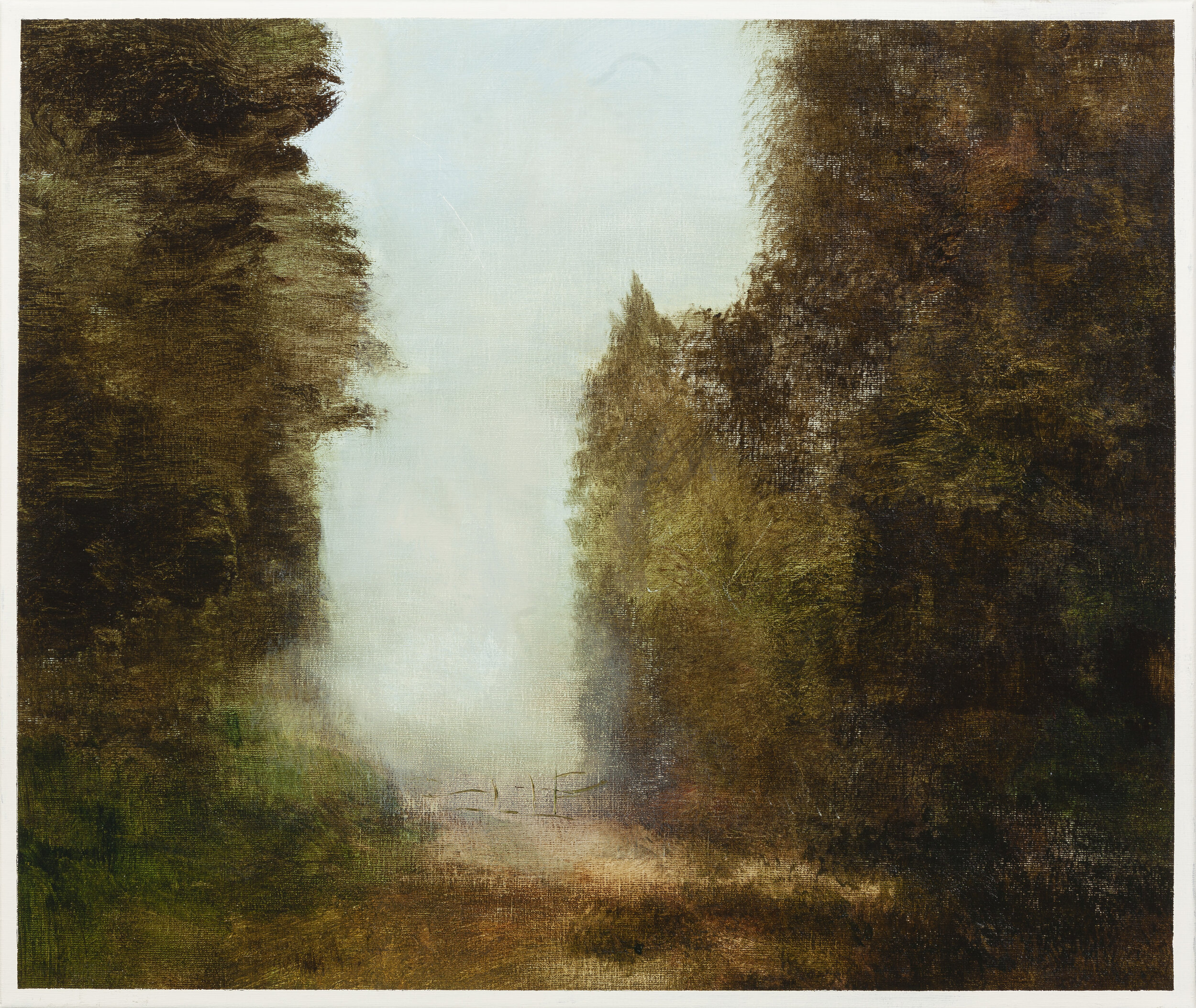Foudroyé
JEAN-MARIE BYTEBIER | CHARLIE DE VOET | JOOST PAUWAERT
25/10 - 1/12/2019
Exhibition view (2nd room) ‘Foudroyé’ with works by Jean-Marie Bytebier, Charlie De Voet and Joost Pauwaert. Barbé Urbain gallery, Ghent.
Text by Roxane Baeyens:'Foudroyé' means struck by lightning, frightened, but at the same time overwhelmed by the staggering beauty of natural phenomena such as thunder and lightning, or the swirling ocean. In Foudroyé the works by Jean Marie Bytebier, Charlie De Voet and Joost Pauwaert enter the world of the sublime. The sublime or Das Erhabene is the aesthetic quality that relates to the incomprehensibility of what is great, its disharmony and irregularity. Where beauty brings about an emotion of joy, with the sublime an uncanny feeling takes hold of you.
The sublime overwhelms every spectator with an irresistible force. Though frightening and enigmatic, it provides both insight and euphoria. In the face of the infinite ocean, man acknowledges his own insignificance. At the same time, however, he realizes that although he should feel subject to that power, his consciousness remains untouched.
Exhibition view (1st room) ‘Foudroyé’ with works by Jean-Marie Bytebier, Charlie De Voet and Joost Pauwaert. Barbé Urbain gallery, Ghent.
The awareness of superiority as a moral being, has, according to Immanuel Kant, taken the place of the inferiority as "Sinnenwesen" (sensory being). It’s an attempt to navigate the border between one’s self and the external world. When encountering something terrible, one’s material existence is threatened. In response to this, we separate ourselves from the physical and identify with our purely cognitive faculties, which retain their independence over a tumultuous reality and take precedence over it. When we experience something crushing, we are instantly forced into a state of transcendental expansion.
Charlie De Voet, ‘Dear Painting’ (2019) Oil on canvas, 250 x 175 cm
Much in the same way as with the swirling ocean, we’re struck by the infinite vastness of the monochrome paintings by Charlie De Voet. Degrades fading from light to dark, painted wet to wet in oil paint, are the result of a labour-intensive and, in the words of the artist, "near meditative process". His deep pools mirror the impotence of the speechless human being: "The frame of a painting allows me to make an attempt at true communication within this boundary". His paintings are of an overwhelming simplicity, as a counterweight to a world in which the artist experiences too many stimuli. Letting go is not unimportant for the painter of mental landscapes, rooted in matter.
Exhibition view (1st room) ‘Foudroyé’ with works by Jean-Marie Bytebier, Charlie De Voet and Joost Pauwaert. Barbé Urbain gallery, Ghent.
Joost Pauwaert ‘Pendule with hammers’ (2018) Oak and steel,120 x 117 x 151 cm
Talking about the sublime, Edmund Burke argues that the perception of terror turns into a feeling of delight when the person, subconsciously, realizes that the potential pain or danger is removed. Joost Pauwaert agrees with Burke that pain and danger are the most powerful of all emotions, because they are conversant about the preservation of the individual. Being confronted with Pauwaert’s violent kinetic installations, the beholder feels battered, yet he can’t help but be seduced by the irresistible attraction of the unexpected. His works stage violence and danger and conceal them in an apollonian way with beauty and mystery. A game of attraction and repulsion creates amazement in the viewer.
Exhibition view ‘Foudroyé’ with works by Jean-Marie Bytebier, Charlie De Voet and Joost Pauwaert. Barbé Urbain gallery, Ghent.
Jean-Marie Bytebier, ‘Foudroyé‘ (2019) Acrylic on canvas, 60x70cm
Similarly, the desolate ‘landscapes’ of Jean Marie Bytebier, deprived of any kind of human reference, leave the viewer puzzled and terrified as much as delighted. The artist brutally breaks the canon of landscape painting: upside-down landscapes, scratched away, cut-out or doubled, confuse the viewer. Bytebier doesn’t give the viewer anything to hold onto. Obstacles, such as bushes and trees take over the entire painting and block the view that was supposed to bring solace. The toned-down use of colour, often pale and somber, economically applied, ultimately dissolve the landscapes into abstract monochromes. Fragmentation, zooming in and magnifying fades into the endless vastness of sublime nature.






